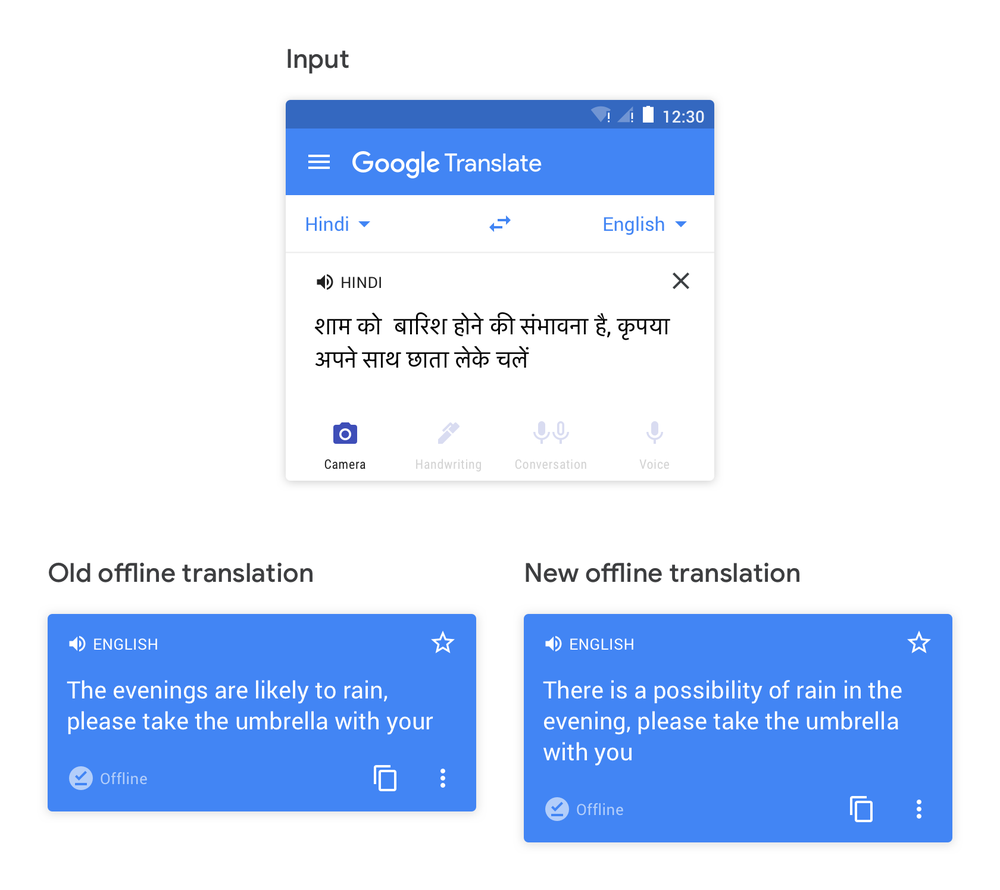Google translation service offers more accurate offline translation capabilities
Google Translate is currently the world’s most widely used automated translation service. This translation service is integrated into Google’s products for cross-language communication for users. In recent years, Google has started to use machine learning technology to optimize translation. By using machine learning technology, Google translation will be relatively more accurate. However, machine learning previously relied on Google’s powerful server deployed in the cloud. If there is no network to perform offline translation, how to ensure translation accuracy?

Google said in the latest blog that the company has optimized offline translation functions, and the offline translation accuracy of some languages has been greatly improved after the optimization. The overall accuracy of offline translation increased by more than 12%, and some languages such as Japanese, Korean, Thai, Polish, and Hindi improved by 20%. The most intuitive benefit of increased accuracy is that Google Translate will provide better word selection, grammar, and sentence structure alignment when performing offline translation.
At the same time, to help non-native speakers to pronounce better, this update of Google Translate will also support display transliteration to allow users to get used to the equivalent spelling. Languages currently supported for offline transliteration include Arabic, Bengali, Gujarati, Kannada, Marathi, Tamil, and Urdu. Interested users can download and install Google Translate for Android or iOS to experience these new features.





